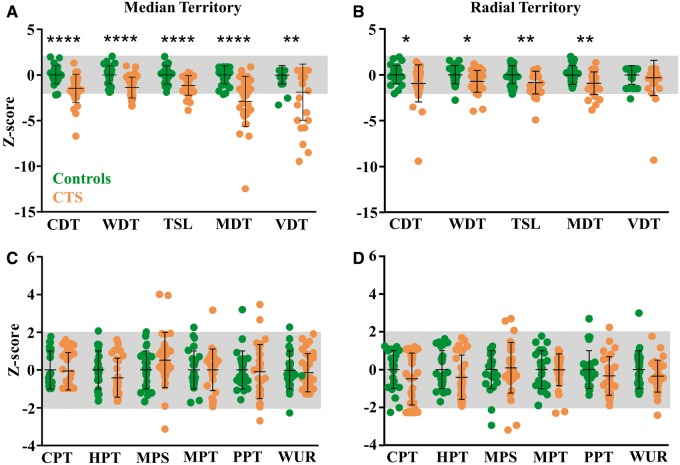Figure 1.
Somatosensory profiles determined with quantitative sensory testing in the median nerve territory (A and C) and the radial nerve territory (B and D) of patients with carpal tunnel syndrome (orange) and age and gender matched control subjects (green). Data are expressed as mean Z-scores with standard deviations and the grey area indicates the normal range of ± 2SD of the control subjects. (A) Patients with carpal tunnel syndrome have a significant loss of function in all detection thresholds measured in the median nerve territory compared to control subjects. (B) In the radial nerve territory, patients with carpal tunnel syndrome have loss of function in cold (CDT), warm (WDT) and mechanical detection thresholds (MDT) but not vibration detection (VDT). Patients also have a reduced ability to differentiate temperature changes (e.g. thermal sensory limen, TSL). No changes were apparent for any of the pain thresholds measured both in the median nerve territory (C) and the radial territory (D). This indicates that patients with carpal tunnel syndrome overall had a pattern of hypoaesthesia but not hyperalgesia. *P < 0.05, **P < 0.01, ***P < 0.001, ****P < 0.0001. CDT = cold detection threshold; WDT = warm detection threshold; TSL = thermal sensory limen; MDT = mechanical detection threshold; VDT = vibration detection threshold; CPT = cold pain threshold; HPT = heat pain threshold; MPS = mechanical pain sensitivity; MPT = mechanical pain threshold; PPT = pressure pain threshold; WUR = wind-up ratio; CTS = carpal tunnel syndrome.

